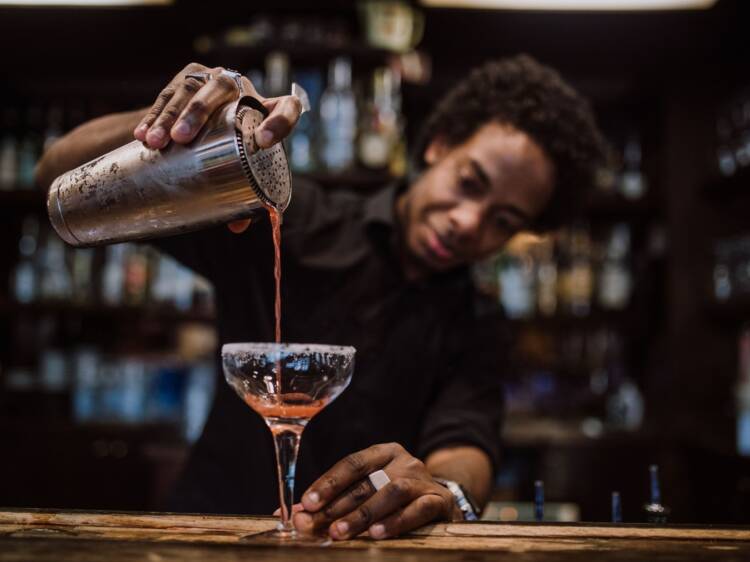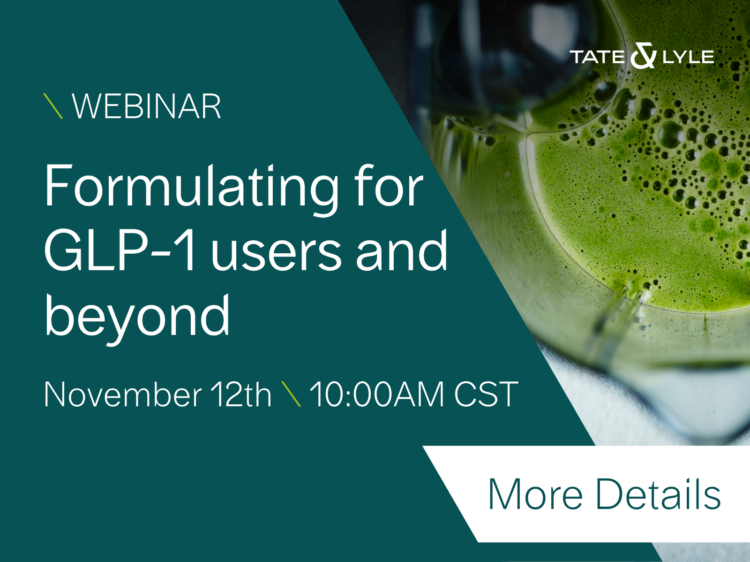Taking A Shot at Sugar: Consumers are Increasingly Looking to RTD Cocktails & Mocktails for Great Taste and Less Guilt
An interview with our experts, Grace Kim, Technical Lead, Beverages; and Amanda Sia, Senior Scientist, Beverages at Tate & Lyle North America
The only constant, as they say, is change. Quite possibly, you could add alcohol to that phrase; humans have been drinking fermented beverages for some 9000 years.
But, even in that seemingly eternal beverage market, tastes fluctuate and popularities surge and wane. In particular, the ready-to-drink cocktail & mocktail sector has recently become increasingly crowded and complex, with all-new demand spaces opening up. Notably, the concept of guilt-free drinking through reduced-calorie offerings has come to the forefront, as anyone who’s lately ventured into a liquor retailer knows.
To learn more about this evolving segment and the science of sweetness in alcoholic beverages, we sat down with a pair of luminaries in the field — product development team leader Grace Kim and food scientist Amanda Sia.
Grace and Amanda, thanks for setting aside this time for us. Let’s begin with who’s leading this trend and what they’re drinking — and not drinking.
Amanda: I think consumers, especially younger consumers, are very open to alternative alcohol formats. There are your traditional beer, wine, and spirits. And then there’s a huge range of RTD cocktails. For example, vodka soda is an explosive market; everyone's coming up with their own vodka soda nowadays.
Also, even though alcohol consumption is going down, with people drinking less wine and straight spirits, they're enjoying them in formats where the ABV is lower. So, the total beverage consumption is not necessarily decreasing. It's the total alcohol that's decreasing. This is part of why we’ve seen such a proliferation of new ready-to-drink products — it's about having more options for consumers.
Among all these options, is there a leading alcohol category? What seems to be the drink of choice?
Amanda: We've seen that beer and wine consumption have decreased. When it comes to RTD cocktails, there’s growth coming from the spirits sector. We see fewer, say, wine coolers and more spirits-forward cocktails. That includes tequila- and mezcal-based drinks, vodka soda, and more.
Vodka will always be popular because it's a neutral-tasting spirit, and you can do a lot of things with it. But mezcal and tequila are two trendy spirits we see coming on strong. Outside the RTD cocktail space, cordials and cream liqueurs are also growing.
Grace: Call it a “hot take,” but, in a way, alcohol is the fastest-growing “functional beverage.”
Amanda: But the way this industry moves is so dynamic. Two summers ago, suddenly, everybody was drinking hard seltzers. It's hard to say how long a trend will last; will it fade, or will it persist? But as of right now, this is what we see.
And many players are entering the ready-to-drink alcohol arena, if you will. Traditional non-alcoholic beverage companies and also many large alcohol brands — everyone's joining hands and linking up. I think four out of the five largest alcoholic beverage companies in North America have already entered some sort of joint partnership with one of the traditional beverage giants.
Grace: It's so interesting. As Amanda said, soda and other beverage companies are making alcoholic drinks, and alcohol companies are making their own cocktails. You'll see a company make its own whiskey and cola, and the same company will also make whiskey and cola in partnership with a well-known cola brand. Even some of the leading juice and fruit drink companies entered the RTD cocktail space, as well as a sparkling water producer, which is such an interesting product because it’s vitamin-enhanced water with alcohol.
It’s an intriguing trend, the quest for lower-calories alcohol-based drinks. Is it taking over the segment?
Amanda: There is still a space for full-calorie, full-flavored cocktails, straight spirits, and other liquors. But there's increased demand from consumers who want to enjoy the same taste but consume fewer calories. Alcohol on its own contributes a lot of calories to a drink. For example, a typical one-ounce serving of vodka delivers approximately 60 calories. Then, you mix it into a Cosmopolitan or something similar — that can add even more calories from the additional alcohol and juice.
For those consumers who may not drink straight spirits as often but choose to enjoy them in a cocktail format, those drinks typically have sweetness added to them.
So how do you indulge but not excessively? That's the question to which many consumers are looking for answers.
When you remove or reduce the sugar in an alcoholic beverage, does that introduce formulation problems or impact the final product?
Grace: The function of sugar in mixed alcoholic beverages goes beyond sweetness. It's also covering up the alcohol “burn,” potentiating specific flavors, and there’s the taste of the sugar itself. Looking at classic bar rail drinks, like whiskey and cola versus whiskey and diet cola, the expression of the whiskey taste is so different. It presents another realm of challenges when we shift a traditional RTD cocktail into a lower-calorie one.
You can't adjust the alcohol portion because you need to retain a certain percentage of alcohol. But if you want the flavors or sweetness and the alcohol to express in a specific way, you have to change the whole system, and that’s more challenging with alcohol than with traditional beverage development.
Amanda: The challenges also look different depending on whether you're in the low-, mid- or high-ABV space. So it's a very dynamic category to work in, and it’s one in which we've worked quite a bit with our customers.
There are a lot of ways to make things taste sweet and good, but then take out the sugar. One ingredient we've had success with in reduced-calorie alcoholic beverage formulations is allulose. It’s a bulk sweetener like sucrose. And to Grace's point, with some spirits, you do have that burn, which sugar can help mitigate or cover up. Working with our DOLCIA PRIMA® Allulose product, we've discovered that we can do something similar and take the edge off hard spirits for a smooth and pleasant drinking experience.
Looking to the future, what do you see emerging in products you're working with or new or expanding cocktail and mocktail categories?
Grace: I think it’s glucose — beverages that help to modify your glucose response, which I think will include drinks based on acetic acid. I do believe drinking vinegars will make a strong comeback. And mushrooms, always mushrooms.
And many of those ingredients in the purely functional space are translating over into alcohol. I've seen what looks like a fancy green juice, and then it also has alcohol. Or hard kombuchas, where you get all the benefits of kombucha, but they over-ferment it, so you also get the alcohol effects.
Amanda: It’s exciting, and I feel like a lot of new things are coming out of it scientifically, too, because everyone's attention is on this category right now.
It’s worth noting that, when it comes to RTD cocktails, consumers are not as brand loyal as they are to their favorite traditional beverages. They like trying new things, which opens up many opportunities for brands to make a splash. Having the right sweetening system can help drive repeat purchases, though, and that’s where working with a creative and experienced product development team comes in.
Want to connect with our team of experts on this trend?

